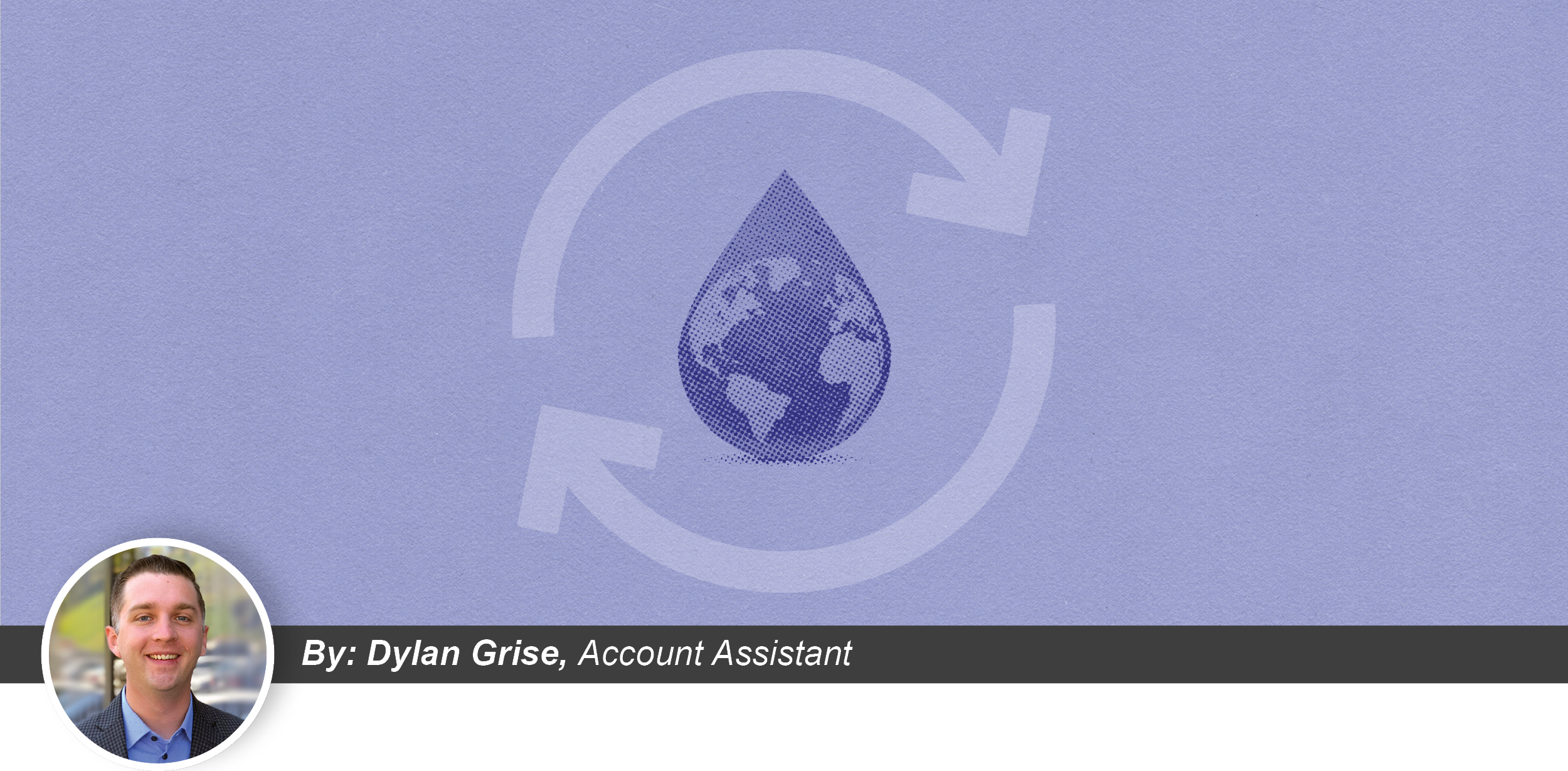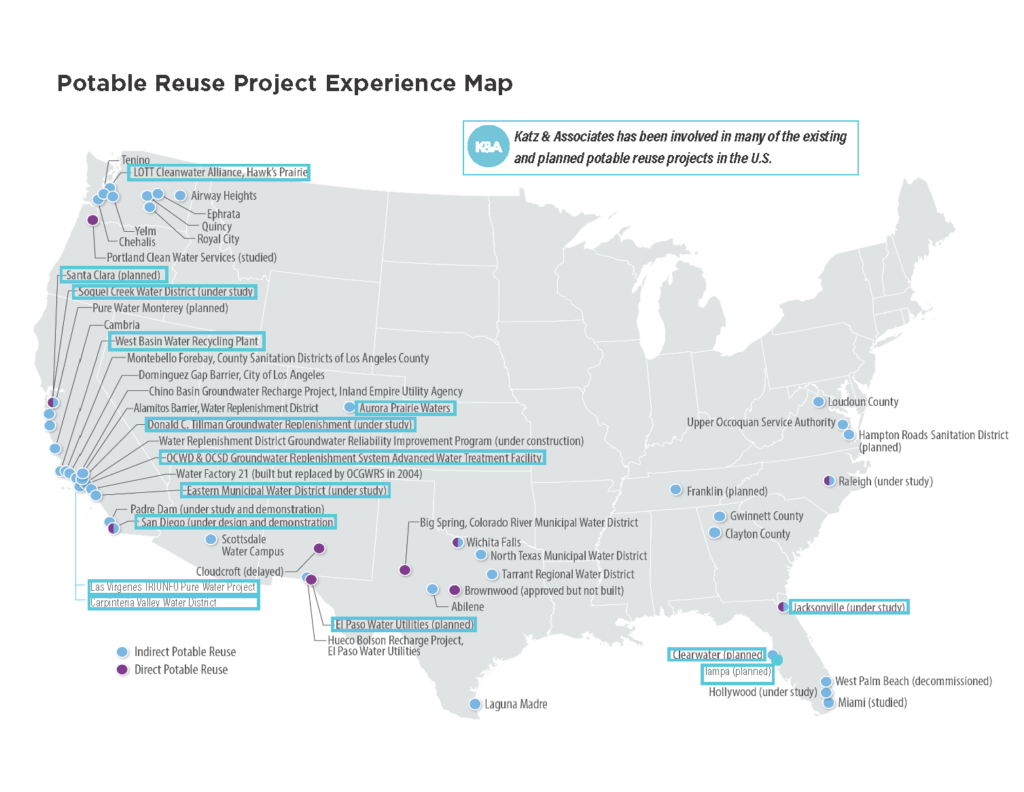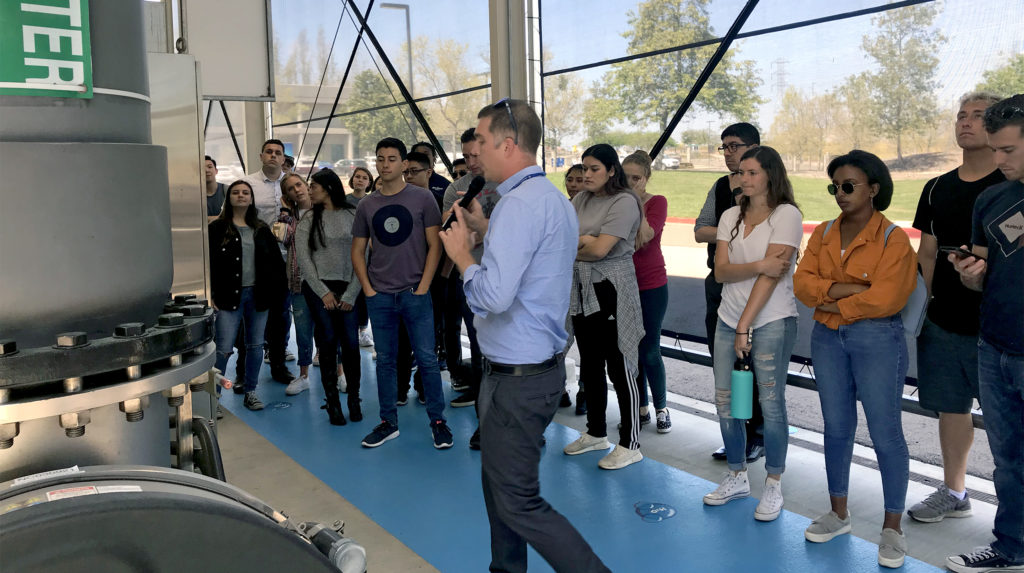
26 Aug Why Is There All This Buzz About Water Reuse?

As arguably the most valuable and vital resource on the planet, clean water and its availability should always be at the top of the list of issues being discussed. Water is a part of everything we do, everything we see, everything we have. Agriculture and industry need water to produce the food and goods we use every day. People, plants and animals all rely on water to survive. We use it for recreation. We use it for work. And increasingly we hear requests to conserve it and to recycle or reuse what we can – and that’s where it gets exciting for us “water people.”
The technologies for water reuse have been around, and been well known throughout the water industry, for decades and are becoming more of a mainstream conversation as water challenges continue to grow globally. Conservation efforts have reduced water consumption for residential and commercial uses, but conservation alone cannot resolve the world’s water challenges. While all water is 100% recyclable, most water distribution systems are primarily single-use: use it once, clean it up, discharge it. The WateReuse Association has become a thought leader in the world of water reuse development, and its state sections have helped push the envelope for legislation, secured funding and educated water agencies about the enormous potential for water reuse programs.
I am fortunate enough to work at Katz & Associates, a public affairs firm that is deeply involved with water reuse projects around the country (including my opus, the City of San Diego’s Pure Water Program). I have experienced first-hand how the need for fresh drinking water, and the subsequent facility and technology innovations, have changed the way we think about where we get our water and how reliable our water sources may be in the future. And just in time, as it would seem.

Seven of the world’s 30 largest cities are most at risk of running out of water. (Think about that: this means that over one quarter of our top 30 largest cities are at risk of running out of water.) While this may not be a surprise in places like Mexico City (12 inches of rain annually) or Cairo (almost zero rain annually), places like Tokyo (60 inches annually) and Sao Paolo (53 inches annually) are dealing with limited water reserves as well.
While each city faces its own specific water challenges, common factors include drought and climate change; increased water needed for agricultural and commercial use; political turmoil; and increased population and water consumption. This is a good time to point out that the water we have on earth is the same water we have had since the water formed eons ago, and it has been recycled via the hydrologic cycle for just as long; however, the notion of using water once and letting nature clean it for use again is about as old as the water itself. With today’s technology, water reuse projects can mimic processes that naturally occur in the environment so we can clean and reuse water, safely and more quickly.
In Southern California, Los Angeles, Orange and San Diego Counties have water reuse projects to address their limited local and imported supplies of fresh water. Desalination, recycled water and advanced water purification are all utilized and recognized as necessary for water supply reliability in an area heavily reliant on water being conveyed hundreds of miles to reach its taps. While providing potable water is an obvious benefit, reduction in ocean discharge, limiting saltwater intrusion into clean water supplies, and providing green energy from the byproducts of the process are all added bonuses.
Around the globe, water reuse is expanding and providing a solution for how to combat water supply challenges. In Israel, the Sorek Desalination Plant is the largest reverse osmosis desalination facility in the world, producing enough water for 1.5 million people every day. As another example, Singapore uses its 17 reservoirs, five water recycling plants and three desalination plants to clean and distribute water to its residents. With half of its potable water currently imported from nearby Malaysia, Singapore is investing $670 million over the next 15 years to become more water self-reliant.
The concept of water reuse is not exclusive to those who need a solution now, rather it is a small (albeit, important) piece of the water portfolio for any agency that is looking to ensure a reliable water supply for the future. I have had the pleasure of hosting tours for college students from Denmark, the Moroccan Minister of Water, Mexican Water Authority staff and an international press delegation at San Diego’s Pure Water Demonstration Facility, which they visited to learn about what makes water reuse an effective solution for San Diego, and how they could use it as a model. Do they all have the immediate NEED for water reuse? Probably not. Could they all benefit from water reuse? Absolutely.

So, why is there all this buzz about water reuse?
The short answer is because it delivers.
Reusing water helps communities, states or in some cases, entire countries provide a sustainable water supply for the residents that rely on it for every facet of their lives. Water reuse programs allow treated water to be recycled and reused in a myriad of ways while conserving the water we have saved for a (not so) rainy day. By reusing water, we can alleviate the demand on natural water sources that are affected by climate change and increased usage. We may be faced with water challenges, but we are becoming more equipped to make the necessary changes in our industries and communities to overcome them.
Getting out into the community and spreading the word about the “water of the future” has been an incredible learning experience and I know that this is just the beginning for me. Need has been a large driver for the innovation that has allowed us to accomplish water reuse at the scale we see today. As more people have become exposed to the environmental benefits, reliability and safety of reused water, the conversation is beginning to trickle out of water industry newsletters and into our newsfeeds. Water reuse is exciting. Water reuse is innovative. Water reuse is one way that we can help ensure future generations have the clean water they deserve!
Dylan Grise is an Account Assistant at K&A and works on-site as a Community Outreach Specialist for the City of San Diego’s Pure Water Program. He enjoys being able to share information about the benefits of water reuse with community members and can often be found conducting tours and presentations. Dylan received his PR degree from San Diego State University (Go Aztecs!) and enjoys spending his time golfing, traveling and cooking.
